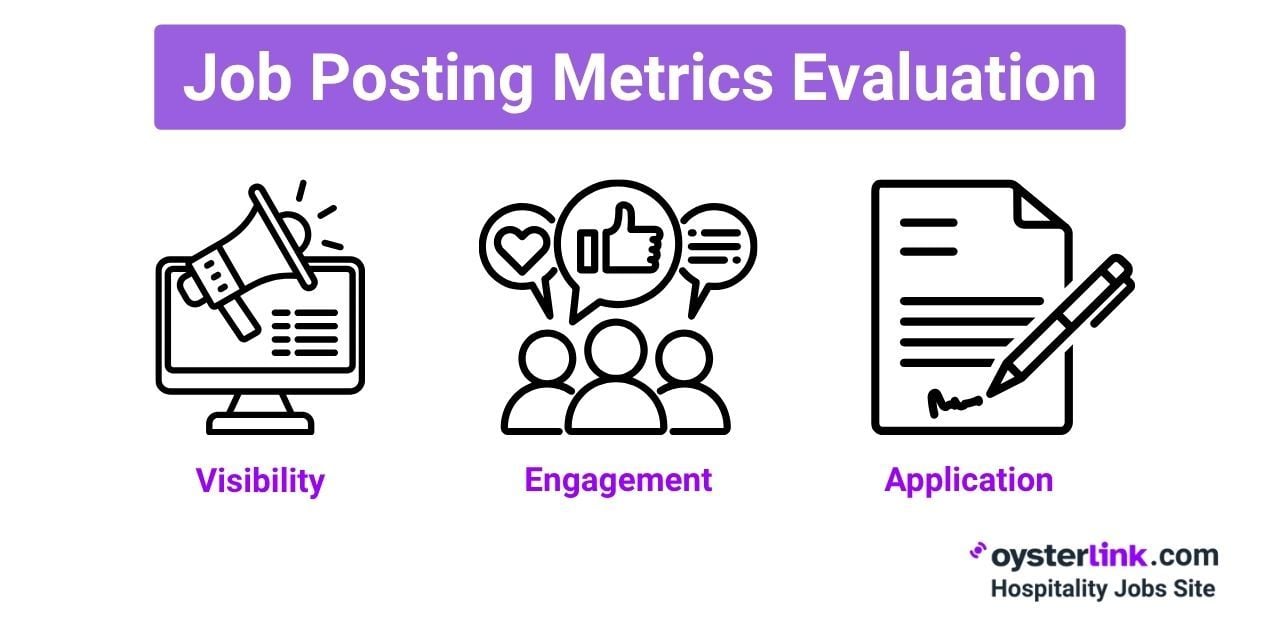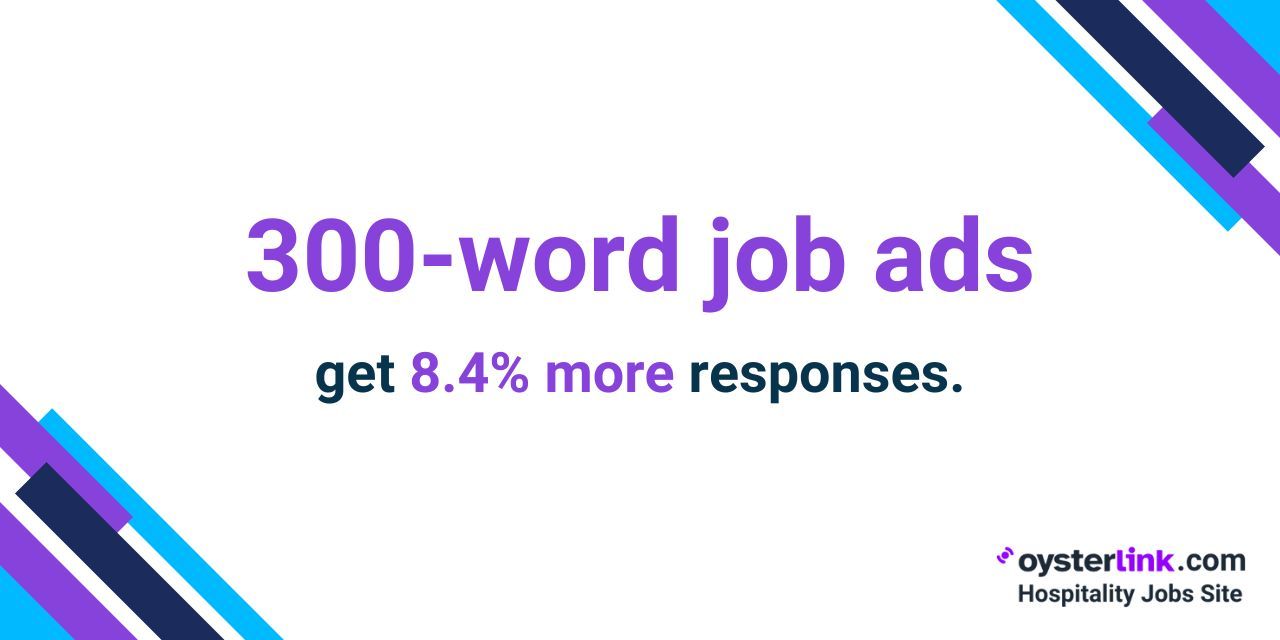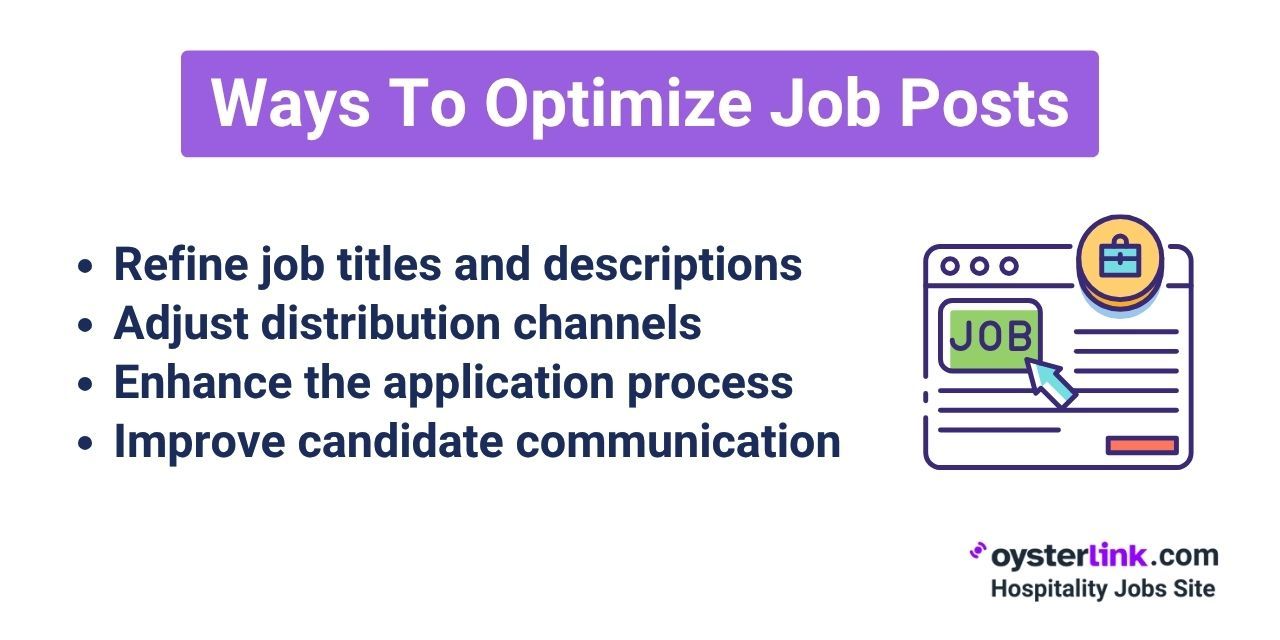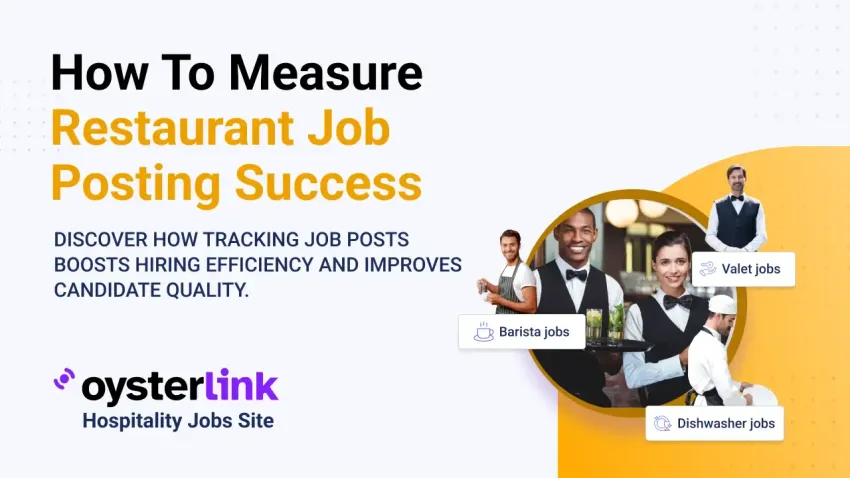Understanding how your job postings perform is key to attracting top restaurant talent. Job posting tracking helps you refine strategies, improve hiring and secure better candidates.
Importance of Job Posting Tracking
Job posting tracking helps you make smarter hiring decisions by revealing what’s working — and what isn’t — across your recruitment process.
It lets you focus resources on the most effective channels and improve job descriptions, applications, and candidate experience.
When done well, data-driven hiring strategies may reduce employee turnover by up to 25%, boosting retention and cutting rehiring costs.
Essential Metrics for Job Posting Tracking and Success
We group job posting metrics into three key areas: visibility, engagement and application. This helps you track the entire recruitment journey — from views to completed applications.
Visibility metrics
Visibility metrics measure how many potential candidates see your job postings, providing insights into their reach and effectiveness.
- Impressions: How often your job posting appears in search results or on job boards.
- Click-through rate (CTR): The percentage of viewers who click on your job posting after seeing it.
- Search ranking position: Where your posting ranks in search results on job boards or search engines.
Tracking these metrics is essential — 82% of companies say data plays a critical role in talent acquisition decisions, highlighting the risk of falling behind without clear visibility into performance.
Engagement metrics
Engagement metrics measure how effectively your job postings capture candidates' interest and encourage further interaction.
Key engagement metrics include:
- Time on page: How long candidates spend reading your job posting
- Application start rate: Percentage of viewers who begin the application
- Job posting shares: Times your posting is shared, indicating interest and reach
Pro Tip: If you want a solid overview of key recruitment KPIs, this video does a great job explaining how to measure and interpret engagement-related metrics.
Application metrics
Application metrics focus on the actual submission of job applications. These metrics help evaluate the quality of applicants and identify potential drop-off points in the application process.
- Application completion rate: The percentage of started applications that are completed and submitted.
- Application quality score: A measure of how well the submitted applications match the job requirements.
- Application drop-off rate: The percentage of candidates who abandon the application process before completion.

Tools and Techniques for Effective Job Posting Tracking
Successfully monitoring job posting performance requires the right tools and techniques. Below are some essential resources and strategies to consider:
Applicant Tracking Systems (ATS)
An Applicant Tracking System (ATS) is software designed to help employers simplify and manage the hiring process by organizing and tracking job applications.
For restaurant employers, using an ATS tailored to the hospitality industry — such as Harri — can further streamline recruitment efforts. These systems centralize candidate information, automate workflows and provide valuable insights into recruitment metrics.
Google Analytics
Google Analytics is an essential tool for employers who host job postings on their own career pages or are looking to expand their reach by publishing jobs on Google.
By using custom tracking codes — snippets of code added to specific pages or links on their website — employers can monitor the performance of their job postings.
These codes allow tracking of user interactions, such as how long users stay on the page, whether they navigate away without taking action or if they complete an application.
Social media analytics
Social media analytics tools are invaluable for employers who share job postings on platforms like Facebook, TikTok or LinkedIn. These platforms offer native analytics features that provide detailed insights into job post performance.
For instance, LinkedIn’s analytics dashboard tracks metrics such as post views (which reflect visibility), clicks (which indicate engagement) and applicant demographics (which help employers understand the types of candidates interacting with their postings).
Optimizing Job Postings Based on Performance Data
Once you've gathered performance data on your job postings, the next step is to use these insights to optimize your recruitment strategy. Here are some key areas to focus on:
Refine job titles and descriptions
Review how different titles and formats perform, then apply what works to weaker listings. Descriptions under 300 words get 8.4% more responses, so keep content focused and clear. A/B test variations to see what engages your target candidates best.

Adjust distribution channels
Based on your tracking data, identify which channels are delivering the best results in terms of application quality and quantity. Allocate more resources to these high-performing channels while reconsidering your investment in underperforming ones.
Enhance the application process
If your data shows a high drop-off rate during the application process, consider simplifying or streamlining your application forms. Ensure that the process is mobile-friendly and doesn't ask for unnecessary information upfront.
Improve candidate communication
Use engagement metrics to gauge the effectiveness of your communication with candidates. If you notice low response rates to follow-up emails or interview invitations, consider revising your messaging or communication strategy.

Advanced Strategies for Job Posting Performance Analysis
To take your job posting tracking to the next level, consider implementing these advanced strategies:
- Predictive analytics: Use machine learning tools like Google Cloud or Azure to analyze past job post data — views, clicks, applications — and forecast future performance. These predictions help you refine job titles, descriptions, or salary ranges before publishing.
- Competitor analysis: Track how similar job posts from competitors perform. Benchmark elements like job titles, salary ranges and posting platforms to adjust your strategy and stay competitive.
- Candidate journey mapping: Map each step candidates take — from viewing a job post to submitting an application — to find and fix drop-off points that may hurt conversion.
- Seasonal trend analysis: Study how job post performance shifts throughout the year. Timing your listings around peak hiring periods can improve visibility and response rates.
Overcoming Common Challenges in Job Posting Tracking
While tracking job posting performance can significantly improve your recruitment efforts, it's not without its challenges. Here are some common obstacles and strategies to overcome them:
Data overload
It’s easy to get overwhelmed by metrics like impressions, clicks and completion rates. Start with KPIs that match your goals — like click-through and application rates — then expand to others like quality or diversity as needed.
Integration issues
Ensuring seamless integration between different tracking tools and your existing recruitment systems can be challenging. Work closely with your IT department or consider hiring a consultant to help set up a cohesive tracking ecosystem.
Privacy concerns
As you collect more data on candidates, it's crucial to maintain compliance with data protection regulations. Implement robust data security measures and be transparent with candidates about how their information is being used.
Interpreting complex data
Making sense of complex performance data can be daunting. Consider investing in data visualization tools or training for your recruitment team to enhance their data analysis skills.
Job Post Tracking for Recruitment: Conclusion
Effective job posting tracking helps improve your recruitment strategy. By focusing on key metrics, using the right tools and refining your approach, you can attract and hire better candidates.
Staying on top of these practices will keep you competitive in the evolving restaurant job market.
Start hiring smarter — post your restaurant job on OysterLink and connect with top hospitality talent today.












Loading comments...